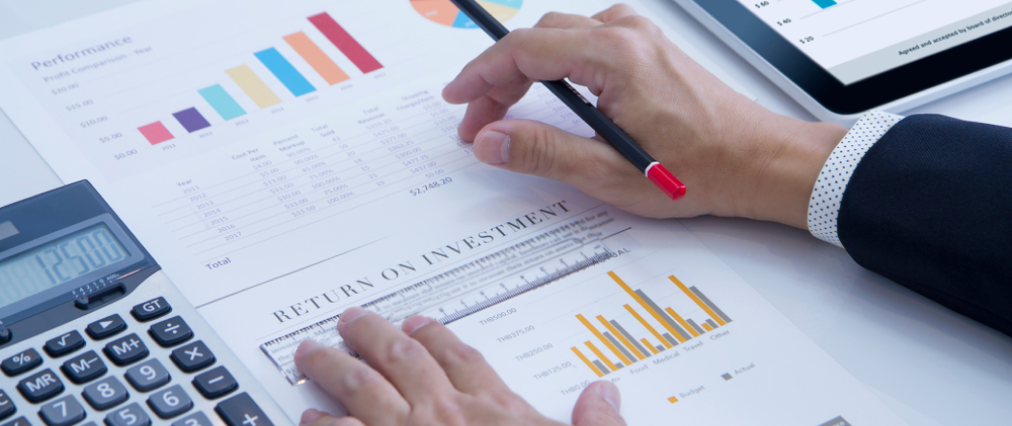28 May, 2024
Maximising ROI at Trade Shows
 Trade show return on investment (ROI) is crucial for you to evaluate the effectiveness of your trade show participation. It measures the benefits gained, such as leads generated and sales made, compared to the investment in exhibiting.
Trade show return on investment (ROI) is crucial for you to evaluate the effectiveness of your trade show participation. It measures the benefits gained, such as leads generated and sales made, compared to the investment in exhibiting.
Understanding trade show ROI helps to assess the success of your participation and allows you to make informed decisions about future strategies. Join us as we share 5 ways to maximise your trade show ROI.
- Understanding Trade Show Return on Investment (ROI)
- Understanding Trade Show Return on Investment (ROI)

Trade show return on investment (ROI) refers to the return on investment generated from participating in trade shows. It measures the effectiveness of a company's investment in exhibiting at trade shows compared to the benefits gained, such as leads generated, sales made, brand exposure, and other tangible and intangible returns.
Measuring ROI at trade shows is crucial for businesses to assess the success of their trade show participation and justify the resources allocated to these events. Understanding the ROI helps you determine if your investment in trade shows is yielding positive results or if changes need to be made to your strategies.
- Developing a Trade Show Strategy
- Developing a Trade Show Strategy

A well-defined trade show strategy helps streamline your efforts, increase brand visibility, generate quality leads, and ultimately drives growth and success at trade shows.
- Set Clear Objectives:
Define specific goals aligned with business objectives, such as increasing brand awareness or generating leads.
- Identify Your Target Audience:
Analyse demographics and interests to tailor messaging and booth design effectively.
- Choosing the Right Shows:
Research events that match your objectives and target audience, prioritising those with high attendee concentration.
- Budget and Resource Planning:
Allocate resources strategically, considering expenses like booth rental, travel, and staffing to maximise ROI.
3. Trade Show Marketing Strategy

Maximising ROI with an effective trade show marketing strategy involves various tactics aimed at generating buzz, attracting attendees, and engaging them effectively:
- 1
- 2
- 3
- 4
- 5
- Engaging Attendees to Boost Trade Show ROI
- Engaging Attendees to Boost Trade Show ROI

Engaging attendees effectively is crucial for boosting trade show ROI. Here are some strategies to consider:
Implement various engagement techniques such as interactive product demonstrations, engaging games or contests, and live presentations to capture attendees' interest and encourage them to visit your booth.
Focus on personalised interactions with attendees to establish meaningful connections. Take the time to understand their needs and challenges, and tailor your messaging accordingly to demonstrate how your products or services can address their specific pain points.
Develop a lead qualification process to identify the most promising prospects. Ask targeted questions to gauge their level of interest, budget, and buying timeline, allowing you to prioritise follow-up efforts and allocate resources more efficiently.
Gather feedback from attendees to gain insights into their experience and preferences. Use surveys, feedback forms, or digital engagement tools to collect data on their interactions with your booth and offerings. Analysing this data allows you to refine your trade show strategies for future events and improve your ROI over time.
5. Measuring and Analysing Trade Show ROI
 Measuring and analysing trade show ROI is essential for you to make informed decisions, optimise their trade show strategy, and maximise the returns on your investment. Here's how you can effectively track and analyse your ROI:
Measuring and analysing trade show ROI is essential for you to make informed decisions, optimise their trade show strategy, and maximise the returns on your investment. Here's how you can effectively track and analyse your ROI:
- 1
- 2
- 3
- 4
- 5
Understanding trade show ROI is crucial for businesses to assess their success and justify resources allocated to these events. A well-defined trade show strategy helps streamline efforts, increase brand visibility, generate quality leads, and drive growth. Maximising ROI with effective trade show strategy involves pre-show tactics, booth design, interactive engagement, and social media leverage.
For over 16 years, Unique Exhibitions has been a premier provider of exhibition stands, offering comprehensive project management services from booth design to on-site logistics. When you partner with Unique Exhibitions, you'll be assigned a dedicated project manager with extensive industry experience, ensuring meticulous attention to detail and a seamless process. Request a quote today and enjoy a complimentary design consultation with no obligations.